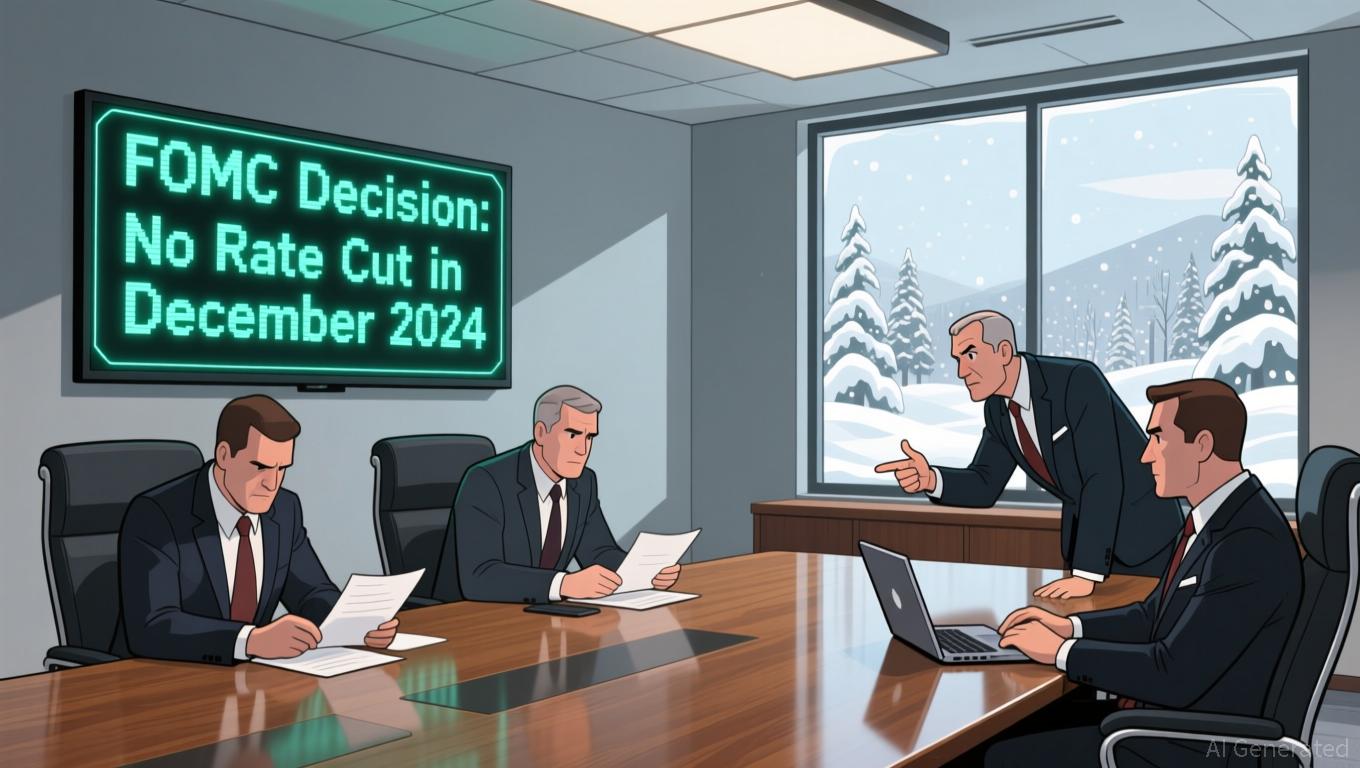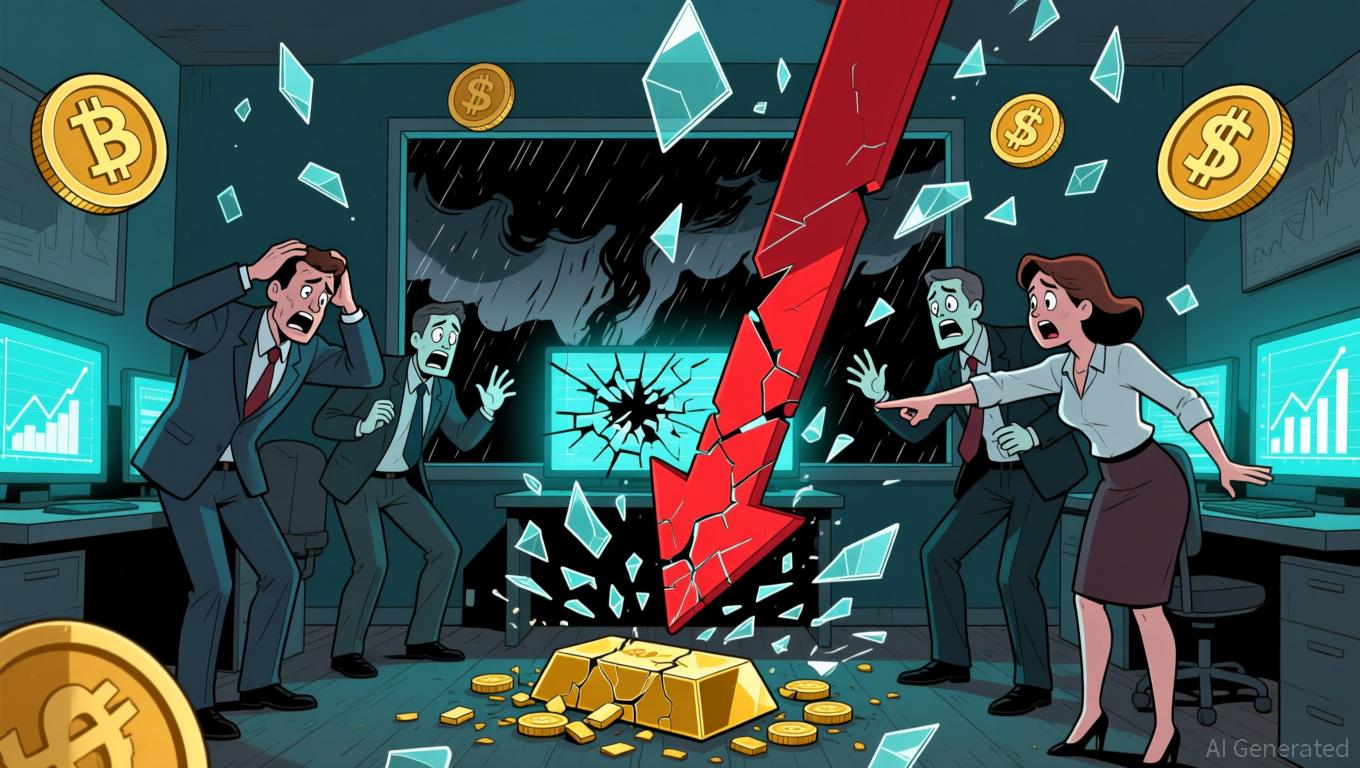Data Shortfalls and Policy Conflicts Prevent Fed from Lowering Rates in December
- The Fed’s December rate cut prospects have dimmed, with officials citing data gaps and inflation concerns, reducing the CME FedWatch probability to 32%. - Delayed BLS labor market reports left policymakers without critical metrics, fueling skepticism about justifying a cut amid internal divisions. - Officials like Christopher Waller argue for easing due to a "stall speed" labor market, while Lorie Logan and Beth Hammack caution against premature cuts risking inflation and market instability. - Markets ha
Expectations for the Federal Reserve to lower rates in December have faded sharply, as officials such as Lael Brainard indicate that additional monetary easing is unlikely due to missing key labor data and ongoing disagreements about inflation. By November 20, the likelihood of a 25-basis-point cut at the December 10 FOMC meeting

The minutes from the October FOMC meeting, made public on November 19, highlighted the central bank’s internal disagreements. Some members supported a rate cut to offset rising unemployment and slower economic growth,
Yet, opposition has become more pronounced. Dallas Fed President Lorie Logan, who does not vote this year,
Shifts in the market are already evident. Bond yields have climbed as traders adjust their outlooks, and industries that depend on low interest rates—like technology and real estate—are experiencing increased volatility
Although a December rate cut now seems unlikely,
Disclaimer: The content of this article solely reflects the author's opinion and does not represent the platform in any capacity. This article is not intended to serve as a reference for making investment decisions.
You may also like
Bitcoin News Update: The Intense Innovation Battle in Crypto: Mutuum's Presale Momentum Competes with Munari's Drive for Stability
- Mutuum Finance’s presale nears $20M with 5% tokens remaining, driven by 250% price growth and strong retail demand. - Bitcoin Munari completes Solana-to-mainnet integration, securing 2027 launch via 1:1 token conversion and third-party audits. - Both projects highlight DeFi innovation but face risks: Mutuum’s rapid price spikes and Munari’s interoperability challenges raise execution concerns. - Experts warn investors about speculative nature of presales, citing potential losses amid unproven tech and vo

Policy Showdown: Yen’s Decline Challenges Japan’s Economic Unity
- Japan's yen plunges to 10-month lows as dovish BoJ policies and fiscal stimulus clash with U.S. rate differentials. - Governor Ueda emphasizes data-driven decisions while Finance Minister Katayama warns of "disorderly" market intervention risks. - 21.3-trillion-yen stimulus package raises inflation to 3.0%, deepening policy tensions between fiscal expansion and monetary restraint. - Fed's delayed rate cuts and geopolitical factors like China's tourism decline compound yen's vulnerability to speculative s

Bitcoin Updates: Crypto Fear Index Drops to 11—Is This the Market Floor or Could Prices Fall Further?
- CMC Crypto Fear and Greed Index hits record low of 11, reflecting extreme market panic amid heightened volatility and regulatory uncertainty. - Bitcoin's 30% and Ethereum's 41% declines mirror broader selloffs, with MSTR losing 60% and BitMine dropping 52% as crypto-linked equities collapse. - Bank of America warns of 2018-style capitulation risks from stretched valuations and Fed rate-cut expectations, while PrimeXBT expands Solana integration to navigate sector challenges. - Analysts debate cyclical bo

Global authorities tighten oversight on cryptocurrencies as the yen’s decline highlights underlying economic vulnerabilities
- Bitcoin prices dropped globally as the yen hit a 10-month low, contrasting Canada's stablecoin regulatory advances with Asia's economic fragility. - Japan faces pressure to raise interest rates amid yen depreciation, while a ¥21.3 trillion stimulus aims to balance inflation and growth risks. - Canada's Bank of Canada will oversee stablecoin reserves, aligning with U.S. crypto regulations and signaling global tightening of crypto oversight. - UK's "Operation Destabilise" uncovered a $1B Russian-linked lau
